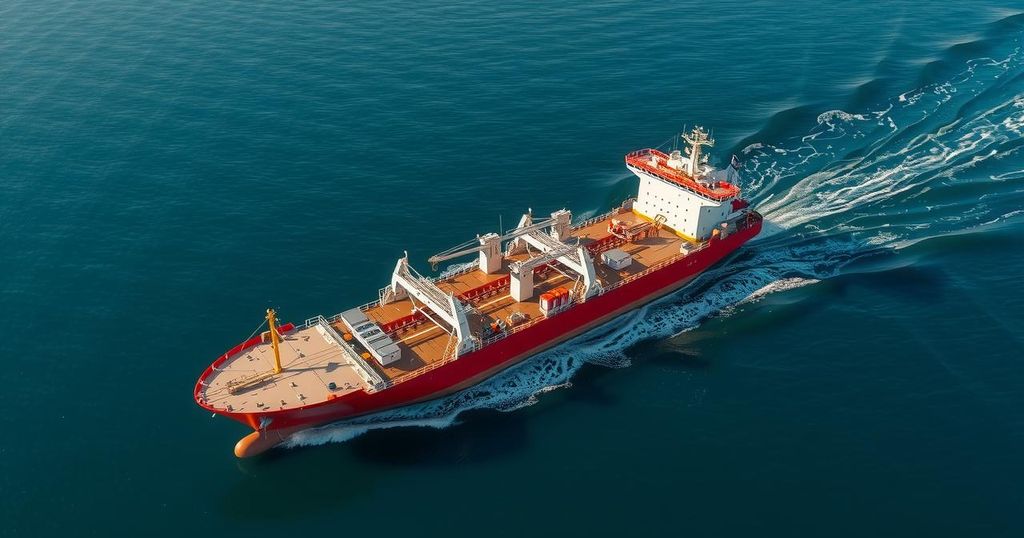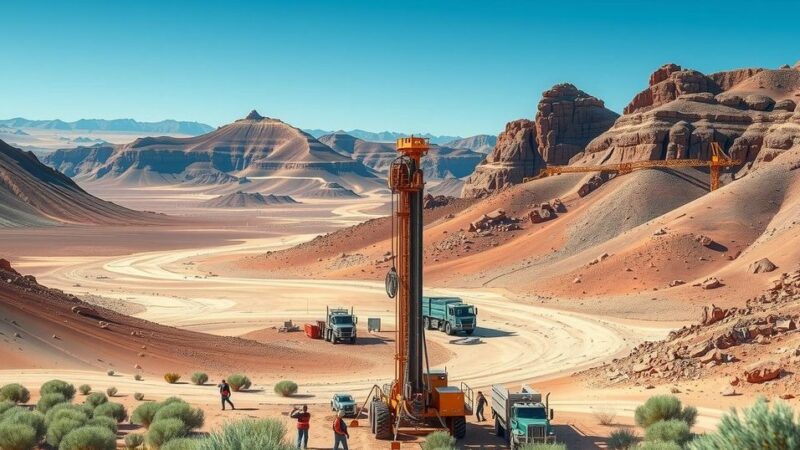SYCAR has transported Ecuador’s first LNG import from Peru, contained in a 40 ft ISO tank, to benefit industrial operations. This historic event underscores SYCAR’s commitment to decarbonization and is a result of strategic reforms in energy regulation. The partnership with Limagas Natural Perú S.A. facilitates increased access to LNG, aligning Ecuador with regional energy practices.
SYCAR has successfully transported the first land import of liquefied natural gas (LNG) from Peru to Ecuador, marking a significant advancement in the nation’s energy sector. The LNG, contained in a 40 ft ISO tank holding 1 million cubic feet of natural gas, arrived at the Peru-Ecuador border service center. This development will benefit Tecnova S.A., an established industrial plant in Guayaquil, as they transition to cleaner energy sources.
According to SYCAR’s General Manager, Nelson Jaramillo Pita, this historic import reflects the company’s commitment to decarbonization and enhances economic efficiency while paving the way for future energy cooperation within the Andean region. He acknowledged the vital role of regulatory reforms by the Ministry of Energy and Mines and the Agency for Regulation and Control of Hydrocarbons (ARC) in shaping the energy landscape. The modifications facilitated the modernization of the natural gas sector, thereby improving its integration into Ecuador’s energy strategy.
Despite current natural gas usage in Ecuador being limited to 1.8% of the overall energy matrix, there exists significant potential for growth through increased imports and local production. This transition aligns with regional practices where natural gas comprises over 30% of the energy matrix. SYCAR envisions expanding key natural gas infrastructure, including distribution clusters and future liquefied natural gas terminals through floating storage and regasification units (FSRUs), contingent upon national demand progression.
The successful transport of the LNG marks the fruition of a strategic partnership between SYCAR and Limagas Natural Perú S.A., a subsidiary of the Lipiandes Group of Chile. This alliance exemplifies the importance of regional collaboration in reshaping the energy sector across Latin America, establishing a logistics corridor to enhance access to LNG for Ecuador’s industrial sector as it seeks cleaner energy solutions.
“This operation not only marks a milestone in Ecuador’s energy history, but also represents a decisive step towards the gasification of the country’s energy matrix,” concluded Jaramillo.
The transportation of liquefied natural gas (LNG) is a crucial aspect of enhancing energy security and diversifying energy sources for countries. This development in Ecuador showcases the importance of regional partnerships and strategic investments in cleaner energy technologies. LNG is known for its low emissions profile, making it an essential ingredient for countries aiming to transition towards more sustainable energy practices while accommodating growing industrial energy demands. SYCAR’s initiative aligns with global trends emphasizing decarbonization and the need for cleaner fossil fuel alternatives, a move that could significantly enhance Ecuador’s standing in the regional energy market. The successful importation of LNG from Peru underscores collaboration between neighboring countries to optimize energy resources and improve energy efficiency. Regulatory reforms also play a critical role in enabling such initiatives by modernizing the energy sector and creating favorable conditions for natural gas to significantly contribute to a more balanced energy matrix.
The successful transportation of LNG from Peru to Ecuador signifies a landmark achievement in the latter’s energy history, emphasizing the necessity for cleaner and more sustainable energy sources. SYCAR’s strategic objectives aim not only at enhancing economic efficiency but also at fostering regional collaboration in the energy sector. Moreover, the potential increase in natural gas’s role within Ecuador’s energy matrix could align it more closely with regional standards, ultimately transforming the country’s energy landscape.
Original Source: www.lngindustry.com






